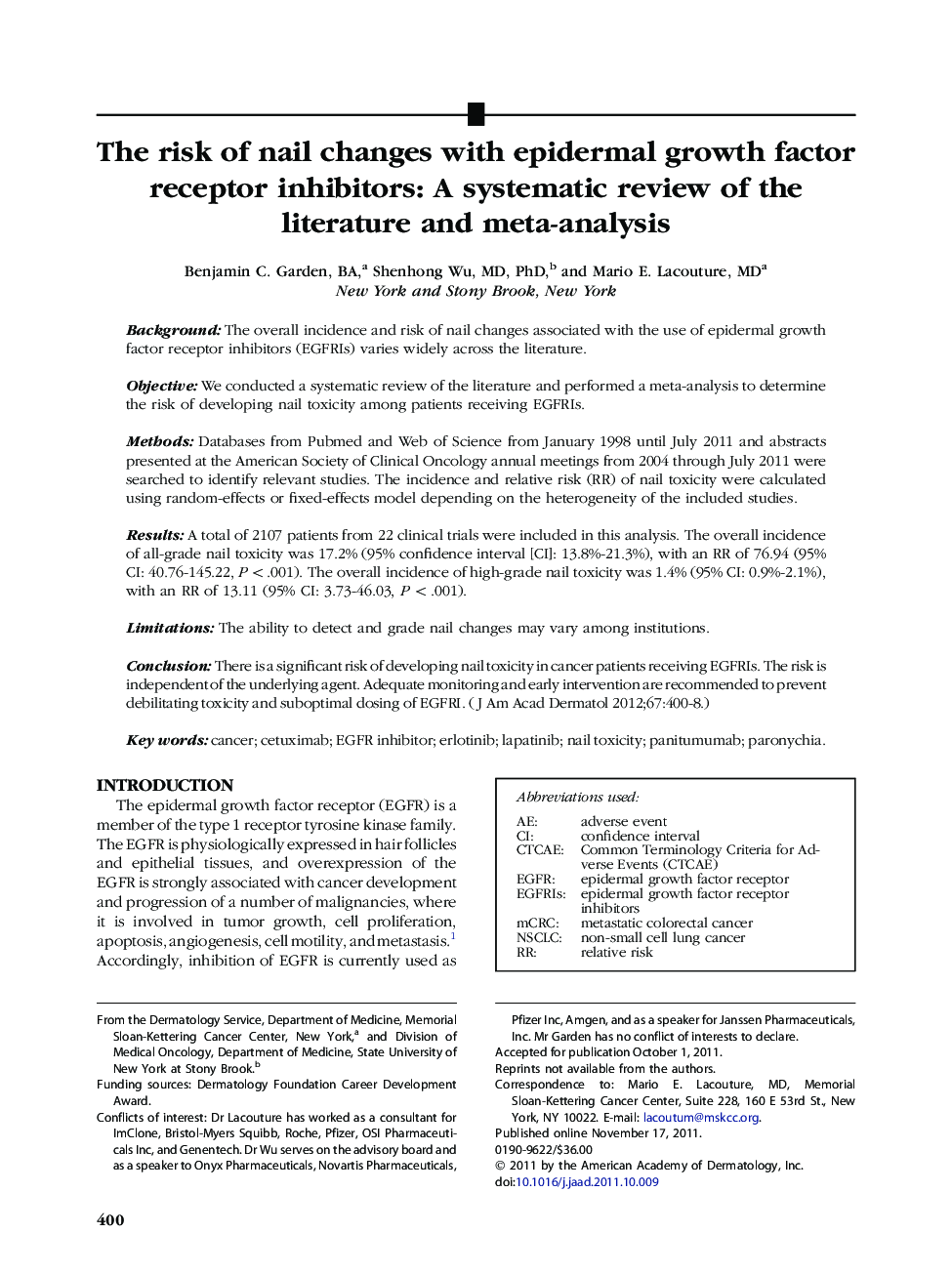| Article ID | Journal | Published Year | Pages | File Type |
|---|---|---|---|---|
| 3206400 | Journal of the American Academy of Dermatology | 2012 | 9 Pages |
BackgroundThe overall incidence and risk of nail changes associated with the use of epidermal growth factor receptor inhibitors (EGFRIs) varies widely across the literature.ObjectiveWe conducted a systematic review of the literature and performed a meta-analysis to determine the risk of developing nail toxicity among patients receiving EGFRIs.MethodsDatabases from Pubmed and Web of Science from January 1998 until July 2011 and abstracts presented at the American Society of Clinical Oncology annual meetings from 2004 through July 2011 were searched to identify relevant studies. The incidence and relative risk (RR) of nail toxicity were calculated using random-effects or fixed-effects model depending on the heterogeneity of the included studies.ResultsA total of 2107 patients from 22 clinical trials were included in this analysis. The overall incidence of all-grade nail toxicity was 17.2% (95% confidence interval [CI]: 13.8%-21.3%), with an RR of 76.94 (95% CI: 40.76-145.22, P < .001). The overall incidence of high-grade nail toxicity was 1.4% (95% CI: 0.9%-2.1%), with an RR of 13.11 (95% CI: 3.73-46.03, P < .001).LimitationsThe ability to detect and grade nail changes may vary among institutions.ConclusionThere is a significant risk of developing nail toxicity in cancer patients receiving EGFRIs. The risk is independent of the underlying agent. Adequate monitoring and early intervention are recommended to prevent debilitating toxicity and suboptimal dosing of EGFRI.
